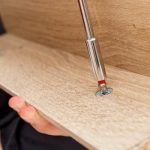Are you wondering how to calculate ROI on home improvements? Making smart investments in your home can not only improve your living space but also increase its overall value. Understanding the importance of Return on Investment (ROI) in home improvements is crucial for homeowners looking to make effective and financially sound decisions when it comes to renovating their properties.
Initial cost is a key factor when it comes to improving your home. Identifying the costs associated with renovations, upgrades, or additions is essential for accurately calculating the ROI. This initial investment will be pivotal in determining whether the improvements made will result in a positive return in the future.
Assessing the increased property value as a result of home improvements is another critical step in calculating ROI. Whether it’s a new kitchen, bathroom remodel, or landscaping project, understanding how these changes will impact the overall value of your home is key. By accurately assessing this increased property value, homeowners can make informed decisions about which projects are worth pursuing and which may not yield a significant return on investment.
Identifying the Initial Cost of Home Improvements
When embarking on a home improvement project, it’s crucial to start by identifying the initial cost involved. This step is essential in determining the potential return on investment (ROI) for the home improvement project. Here are some key considerations when identifying the initial cost of home improvements:
1. Material Costs: One of the primary expenses for any home improvement project is the cost of materials. This can include everything from lumber and paint to fixtures and appliances. It’s important to research and compare prices from different suppliers to ensure you’re getting the best deal.
2. Labor Costs: Unless you’re taking on a DIY project, labor costs will be a significant factor in the initial cost of home improvements. Whether you’re hiring contractors or skilled tradespeople, obtaining quotes and understanding the labor costs upfront is crucial for accurate ROI calculations.
3. Permits and Fees: Depending on the scope of your home improvement project, there may be permit fees or other administrative costs associated with obtaining approval for the work. These expenses should be factored into the initial cost assessment.
By accurately identifying these initial costs, you can then move forward with assessing whether the potential ROI makes the home improvement project a worthwhile investment in terms of increased property value.
Ultimately, understanding how to calculate ROI on home improvements starts with identifying and analyzing all initial costs involved in the project. This information forms the foundation for making informed decisions about maximizing ROI and ensuring that your investment translates into long-term value for your property.
Assessing the Increased Property Value
When it comes to making home improvements, one of the key factors to consider is the potential increase in property value. Understanding how to assess the increased property value is crucial in determining the return on investment (ROI) for your home improvement projects.
To begin assessing the increased property value, start by researching the current market value of homes in your area that have similar improvements. This will give you a benchmark for how much value each specific improvement may add to your property. Additionally, consider consulting with a real estate appraiser or agent to get an expert opinion on how certain improvements can impact your home’s value.
Next, take into account any additional features or amenities that the improvements may bring to your home. For example, adding a new deck or upgrading kitchen appliances can significantly increase your property’s overall appeal and desirability. These factors can contribute to an increase in property value beyond just the cost of the improvements themselves.
Another important aspect to consider is the potential return on investment over time. Certain home improvements may have a higher initial cost but yield long-term savings, such as energy-efficient upgrades that reduce utility bills. It’s essential to factor in these long-term benefits when assessing the increased property value and calculating ROI for your home improvements.
Lastly, remember that not all home improvements will result in a dollar-for-dollar increase in property value. Some projects may have a higher emotional or lifestyle impact rather than purely financial gains. When assessing increased property value, it’s important to weigh both tangible and intangible benefits that the improvements bring to your home.
| Factors Impacting Increased Property Value | Considerations for Assessing ROI |
|---|---|
| Current market value of similar homes with improvements | Factoring long-term benefits into ROI calculations |
| Addition of new features or amenities | Weighing tangible and intangible benefits |
| Potential long-term savings from energy-efficient upgrades | Consulting with real estate professionals for expert opinions |
Calculating the ROI Formula for Home Improvements
One of the most important aspects of undertaking any home improvement project is understanding the return on investment (ROI) that it will generate. This involves determining how much value the improvement will add to your property, as well as comparing this added value to the initial cost of the improvement. By doing so, homeowners can make informed decisions about which projects are worth investing in and which may not provide a significant return.
To calculate the ROI on home improvements, start by identifying the initial cost of the improvement. This includes all expenses related to planning, materials, labor, and any additional costs that may be incurred during the project. Next, assess the increased property value that is expected as a result of the improvement. This can often be determined through a professional appraisal or by researching comparable properties in your area with similar improvements.
Once you have these figures, you can use a simple formula to calculate ROI: (Net Profit / Cost of Investment) x 100 = ROI percentage. The net profit is calculated by subtracting the initial cost from the total increased property value. The resulting ROI percentage will indicate whether or not the home improvement project is likely to be a sound financial investment for your property.
| Expense | Amount |
|---|---|
| Initial Cost of Improvement | $25,000 |
| Increased Property Value | $50,000 |
By considering long-term factors that impact ROI and seeking examples of successful home improvement projects with strong ROI calculations, homeowners can gain valuable insights into how different improvements may perform over time. Additionally, there are various tips available for maximizing ROI on home improvements – from making strategic design choices to selecting high-quality materials that offer lasting durability and appeal.
Ultimately, leveraging ROI for smart home improvement investments involves careful research and planning to ensure that your efforts result in not only an improved living space but also enhanced property value.
Considerations for Long-Term ROI
When it comes to home improvements, considering the long-term return on investment (ROI) is crucial for making smart financial decisions. By taking into account the potential impact of home improvements over a longer period of time, homeowners can better assess the true value of their investment. Here are some key considerations for long-term ROI on home improvements:
- Increased Property Value: One of the most significant factors in determining long-term ROI on home improvements is the potential increase in property value. Certain improvements, such as kitchen or bathroom renovations, can have a lasting impact on the overall value of a home.
- Energy Efficiency: Home upgrades that focus on improving energy efficiency, such as installing solar panels or upgrading insulation, can result in long-term savings on utility bills. This not only adds value to the property but also provides ongoing financial benefits for years to come.
- Maintenance and Repairs: When considering the long-term ROI of home improvements, it’s important to factor in any potential maintenance or repair costs that may arise in the future. Investing in high-quality materials and workmanship can contribute to lower maintenance expenses over time.
Calculating the long-term ROI on home improvements involves looking beyond immediate cost and value increases. It requires a comprehensive analysis of how a particular improvement will continue to benefit the homeowner over an extended period. By carefully considering these factors, homeowners can make informed decisions about which home improvement projects will provide the best long-term return on their investment.
In addition to these considerations, it’s essential for homeowners to also take into account external factors that may influence long-term ROI, such as market trends, neighborhood developments, and overall economic conditions. By staying informed and seeking professional advice when needed, homeowners can strategically plan and execute home improvement projects with confidence in their long-term financial impact.
Factors That Impact ROI on Home Improvements
Location
The location of your property plays a significant role in determining the return on investment for home improvements. Properties located in high-demand neighborhoods or areas with desirable school districts tend to yield higher returns on home improvement projects. On the other hand, properties in less popular locations may not see as much of an increase in value from home improvements.
Market Conditions
The current state of the real estate market can greatly impact the ROI on home improvements. During a seller’s market, where there is high demand for properties and low inventory, homeowners can often recoup a larger percentage of their investment. Conversely, in a buyer’s market with an oversupply of homes, the return on home improvements may be lower.
Quality of Work
The quality of workmanship and materials used in home improvement projects can also influence ROI. High-quality renovations and upgrades are more likely to appeal to potential buyers and add value to the property, resulting in a higher return on investment. Conversely, subpar work and cheap materials may detract from the overall appeal and cause the ROI to suffer.
When considering factors that impact ROI on home improvements, it’s essential for homeowners to carefully evaluate these aspects before undertaking any projects. By understanding how location, market conditions, and quality of work can influence ROI, homeowners can make informed decisions about their investments in improving their homes.
Examples of Successful Home Improvement ROI Calculations
When considering home improvements, it’s important to not only enhance your living space but also ensure that you are making a smart investment. Calculating the return on investment (ROI) for home improvements is crucial in determining whether the upgrades are worth the initial cost. Here are some examples of successful home improvement ROI calculations to illustrate how homeowners can benefit from strategic renovations.
Kitchen Remodel
A kitchen remodel is a popular home improvement project that often yields a high ROI. Suppose you invest $25,000 in a kitchen remodel and the increased property value adds $40,000 to your home’s resale value. To calculate the ROI, use the formula: (Increased Property Value – Initial Cost of Improvement) / Initial Cost of Improvement * 100.
In this case, the ROI would be (($40,000 – $25,000) / $25,000) * 100 = 60%. This means that for every dollar spent on the kitchen remodel, you can expect a return of $1.60.
Bathroom Addition
Another example is adding a new bathroom to your home. Let’s say you spend $20,000 on this improvement and it results in a property value increase of $30,000. Using the same ROI formula, you would calculate (($30,000 – $20,000) / $20,000) * 100 = 50%. With this ROI calculation, it’s evident that adding a new bathroom can be a financially rewarding home improvement project.
Curb Appeal Upgrades
Enhancing curb appeal through landscaping and exterior improvements can also result in favorable ROI. Suppose you invest $5,000 in these upgrades and it elevates your property value by $10,000. The ROI calculation would be (($10,000 – $5,000) / $5,000) * 100 = 100%. This demonstrates that boosting curb appeal can provide an impressive return on investment.
By understanding these successful home improvement ROI calculations and implementing them strategically into your own projects, you can make informed decisions about which renovations will deliver the best financial outcomes for your property.
Tips for Maximizing ROI on Home Improvements
When it comes to making home improvements, homeowners are often looking for ways to maximize the return on their investment. Whether you’re planning to sell your home in the near future or simply want to increase its value for your own enjoyment, there are several strategies you can use to ensure that you get the most out of your renovation dollars.
One of the most important tips for maximizing ROI on home improvements is to focus on projects that have broad appeal. This means considering upgrades that are likely to be attractive to a wide range of potential buyers, rather than niche or highly personalized improvements. For example, a modern, updated kitchen or a well-designed outdoor living space are likely to have broader appeal and may offer a higher return on your investment than something highly specialized.
Another key tip is to carefully weigh the cost of the improvement against the potential increase in property value. Before embarking on any project, it’s essential to research and understand how much value it is likely to add to your home. By considering factors such as the current market trends, neighborhood comparables, and the overall condition of your property, you can make more informed decisions about which improvements will offer the best ROI.
Finally, working with experienced professionals and ensuring high-quality workmanship can also help maximize ROI on home improvements. Cutting corners or opting for lower-quality materials may seem like a cost-saving measure in the short term but could ultimately impact the long-term value of your home. By investing in quality craftsmanship and using durable materials, you can create long-lasting improvements that continue to add value over time”.
Conclusion
In conclusion, understanding the importance of ROI in home improvements is crucial for making smart investment decisions. By identifying the initial cost of home improvements and assessing the increased property value, homeowners can calculate their ROI to determine the success of their investment. This allows them to make informed decisions about which home improvements will provide the highest return.
Calculating the ROI formula for home improvements involves considering long-term factors such as maintenance costs and potential future market trends. It’s important for homeowners to also take into account the factors that impact ROI on home improvements, such as location, quality of materials used, and overall market demand.
To maximize ROI on home improvements, homeowners can follow tips such as focusing on high-value projects, staying within budget, and considering energy-efficient upgrades. Ultimately, leveraging ROI for smart home improvement investments means making strategic choices that will increase the value of a property while providing a satisfying return on investment.
In summary, knowing how to calculate ROI on home improvements empowers homeowners to make informed decisions about where to invest their money. By understanding the formula for calculating ROI and considering various long-term factors and tips for maximizing ROI, homeowners can effectively leverage their investments in home improvements for increased property value and financial gain.
Frequently Asked Questions
How Do You Calculate Return on Renovation Cost?
The return on renovation cost is typically calculated by taking the increased value of the property after the renovation and dividing it by the total cost of the renovation. This gives a percentage that represents the return on investment.
What Is the Average ROI for Renovations?
The average ROI for renovations can vary depending on factors such as the type of renovation, location, and current market conditions. However, a common range for ROI in renovations is between 50-70%, meaning for every dollar spent on renovations, you can expect to recoup 50-70 cents in increased property value.
What Is the Formula for ROI in Construction Project?
The formula for calculating ROI in a construction project is the same as for any other investment: (Net Profit / Cost of Investment) x 100. In construction, the net profit would be the increased property value or revenue generated from the project, minus the initial construction costs. This percentage represents the return on investment for the construction project.

I’m thrilled to have you here as a part of the Remodeling Top community. This is where my journey as an architect and remodeling enthusiast intersects with your passion for transforming houses into dream homes.





